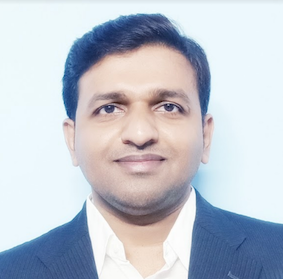Addressing ‘Orphaning’ of Rare Diseases
February 28, 2023 | Tuesday | Views | By Ravi Shet, Clinical Data Management Professional
We should continue to support the improvements and innovations with proper cross collaboration towards the common goal of attacking rare diseases
To tackle any disease requires sustained research and development (R&D), to help us learn more about it and to create effective treatments. However, when it comes to R&D around rare diseases, there are few key challenges which ultimately impact patient outcomes.
The most important challenge is how unevenly spread rare diseases are among populations. We don’t have a complete picture of how many people are affected by rare diseases in India, because most of the time these are not reported properly from the patient or their relatives. It becomes more difficult for the pharmaceutical companies to prioritise, since most of the rare diseases are clinically dissimilar and require unique treatments.
Another big challenge is funding to develop drugs for treating these rare diseases. Since it affects a small number of people in comparison with cancer, cardiovascular disease and diabetes, they are often considered low priority when it comes to allocating funds. Drugs needed to treat rare diseases are known as Orphan Drugs which essentially means that they treat medical conditions so rare that it would not be profitable to produce and develop them.
Conducting clinical trials for rare diseases can be equally challenging in terms of recruiting patients for the particular rare disease as well as time taken to complete the trial for the same, which in turn costs millions of dollars. Post approval follow-up process takes on an even greater role to ensure that the drugs work effectively on the patients.
To promote more efficient and effective research into rare diseases, new epidemiological and clinical trial methods have also been developed. This could benefit and make it much easier and affordable to run clinical trials for rare diseases.
Game Plan
Advancements in medical research and technology will be the key drivers for development of innovative drugs for the treatment of rare diseases. AI is also being used to improve the diagnostic process.
Developments in the precision of genetic testing and the clinical use of genome sequencing are now also accelerating the diagnosis of rare diseases. With lower costs, they are becoming more widely available, and this is leading to a paradigm shift in public health which is termed as ‘precision public health.’ This is enabling screening for rare diseases much earlier and leading to better outcomes overall, which eventually reduces the lengthy journey to an accurate diagnosis.
India Roadmap
The Government of India has launched National Policy for Rare Diseases (NPRD), 2021 in March 2021 for the treatment of rare disease patients. As per the NPRD, rare diseases have been identified and categorised into 3 groups namely Group 1, Group 2 and Group 3.
- Group 1: Disorders amenable to one-time curative treatment
- Group 2: Diseases requiring long term/lifelong treatment having relatively lower cost of treatment and benefit has been documented in literature and annual or more frequent surveillance is required
- Group 3: Diseases for which definitive treatment is available but challenges are to make optimal patient selection for benefit, very high cost and lifelong therapy
The NPRD, 2021 has provisions for promotion of R&D for diagnosis and treatment of rare diseases; promotion of local development and manufacture of drugs and creation of a conducive environment for indigenous manufacturing of drugs for rare diseases at affordable prices. In addition to these, financial incentives for the patients as well as set-up of testing and counselling centres are part of the policy.
Conclusion
No doubt, India has the potential as well as the talent pool to cater the demand for more innovations in producing drugs to treat rare diseases. Also, the policies set by the Government of India will be a game changer for companies going for more R&D in this domain that might benefit patients with rare diseases. At the same time, we should continue to support the improvements and innovations with proper cross collaboration towards the common goal of attacking rare diseases for patient’s better health and longevity.
Ravi Shet, Clinical Data Management Professional










